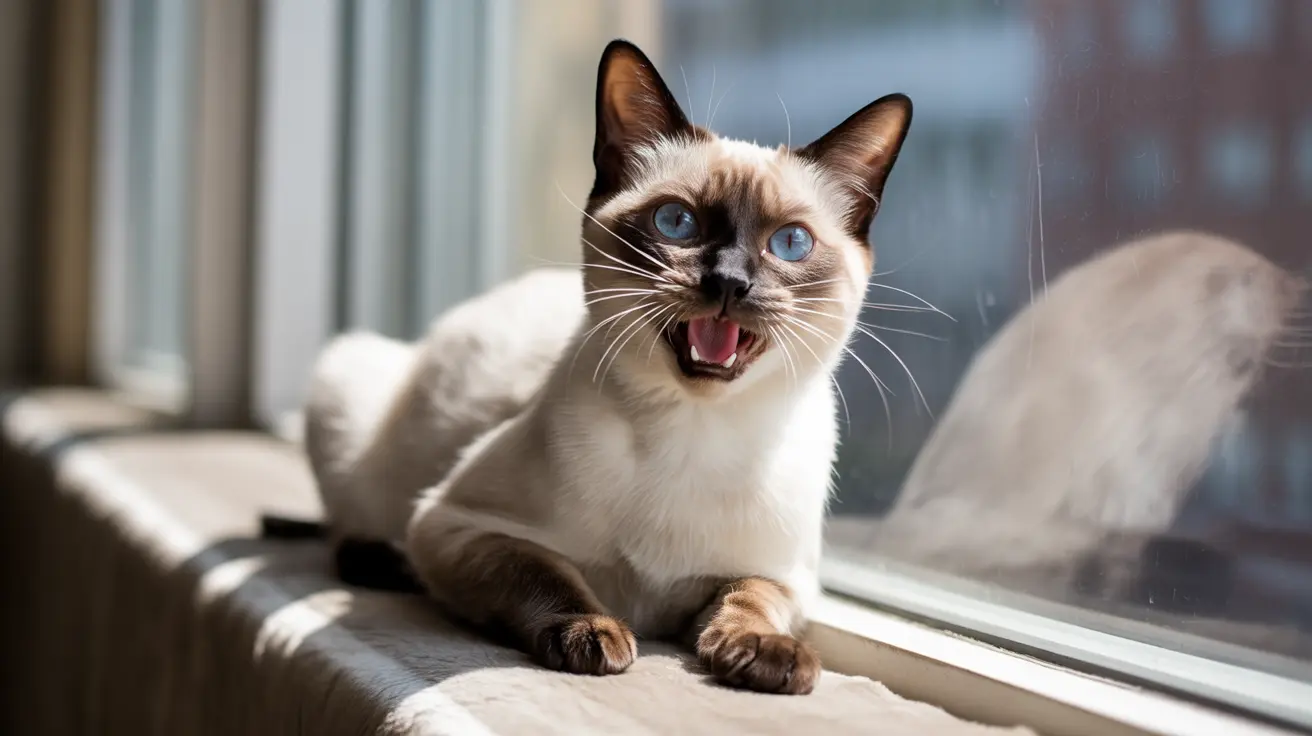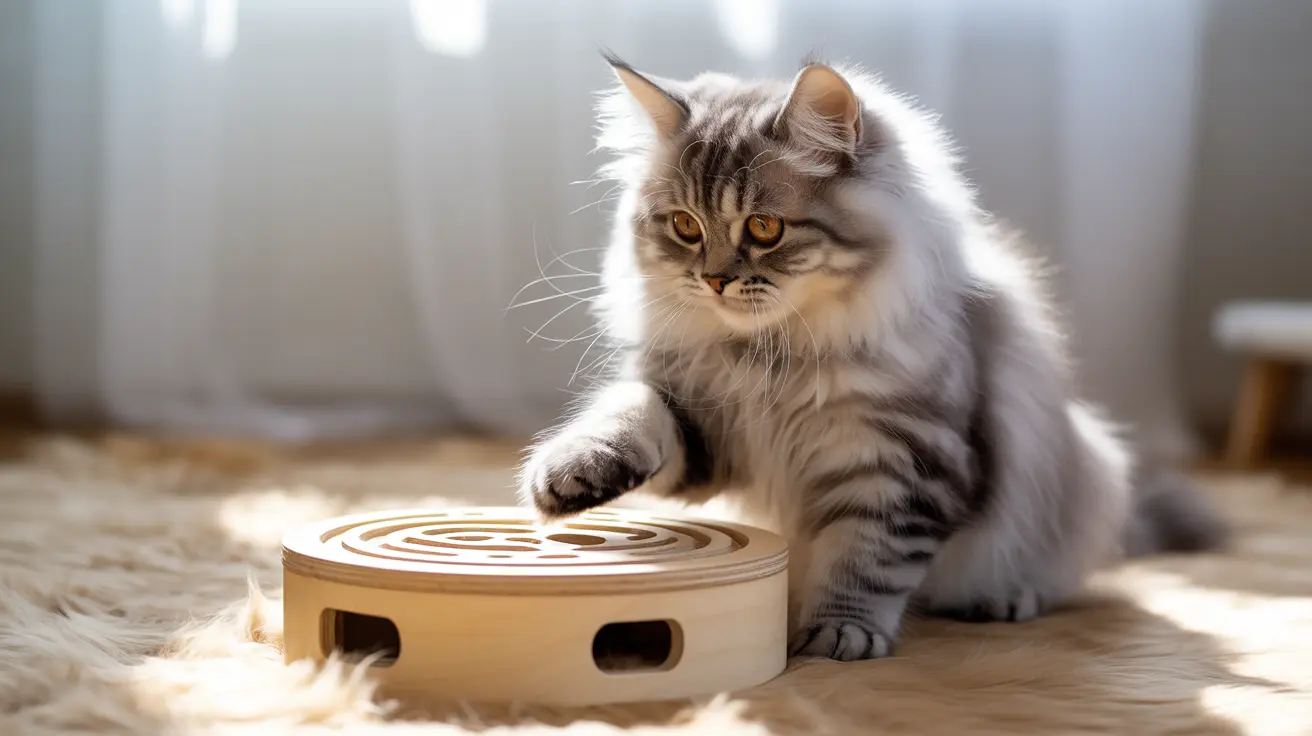When it comes to feline communication, meowing stands out as the primary way cats interact with their human companions. While wild cats rarely meow at each other, domestic cats have evolved to use this vocalization specifically for human communication. Understanding excessive cat meowing—when it's normal, when it's problematic, and how to address it—is crucial for maintaining a harmonious relationship with your feline friend.
Cat vocalization causes can range from simple daily needs to complex medical conditions, making it essential for cat owners to recognize the difference between normal communication and problematic excessive meowing. This knowledge not only helps in identifying potential issues early but also enables more effective responses to your cat's needs.
As we explore this topic, we'll delve into the various reasons behind excessive meowing, from health concerns to behavioral triggers, and provide practical solutions for managing noisy cats. Whether you're dealing with a chatty Siamese or a typically quiet domestic shorthair that's suddenly become vocal, this guide will help you understand and address your cat's communication needs.
Understanding Normal vs. Excessive Meowing
Normal meowing typically occurs during routine activities such as feeding times, greetings, or when seeking attention. However, excessive cat meowing goes beyond these regular communications, often manifesting as persistent, loud, or unusual vocalizations that may occur at inappropriate times such as in the middle of the night or when there is no visible trigger.
- Sudden increases in frequency or volume: A noticeable uptick in how often or how loudly your cat meows can indicate something out of the ordinary.
- Persistent meowing associated with the litter box: When your cat meows while using or near the litter box, it might be experiencing discomfort or trying to signal a problem.
- Excessive nighttime vocalization: Cats may meow extensively at night, disturbing your rest, which can point to a need for more stimulation or a health issue.
- Changes in vocal patterns accompanied by other behavioral changes: Watch for meowing that clusters with agitation, withdrawal, or changes in appetite and grooming.
Recognizing these signs will help you better understand whether your cat’s vocalizations require attention and intervention.
Health-Related Causes of Excessive Meowing
Medical Conditions
Many medical issues can drive your cat to vocalize more than usual. These conditions can cause discomfort or distress, leading to persistent and sometimes plaintive meowing. Common medical reasons include:
- Urinary tract infections
- Kidney disease
- Thyroid problems (such as hyperthyroidism)
- Dental pain
- Arthritis
- Cognitive dysfunction in elderly cats
If you notice changes in your cat’s vocalization along with other symptoms like changes in appetite, grooming habits, or litter box use, it’s important to consult a veterinarian to rule out underlying health issues.
Age-Related Issues
As cats age, their vocalization habits can change, often becoming louder or more frequent. Older cats may experience:
- Cognitive decline, leading to confusion or disorientation
- Sensory deterioration, such as loss of sight or hearing, which can make them more anxious or more likely to call out
- Chronic pain from arthritis or other age-related ailments
- Increased anxiety or confusion during nighttime hours (sometimes called “feline sundowning”)
Supporting senior cats with a predictable environment, gentle reassurance, and prompt veterinary care can help manage age-related vocalization.
Behavioral Triggers for Excessive Vocalization
Attention-Seeking Behavior
Cats are observant and quickly learn which behaviors are effective at getting them what they want. Meowing for food, play, or affection is a common form of attention-seeking behavior. Reinforcing quiet moments with positive interaction, rather than responding only to meows, can help reshape this behavior over time.
Stress and Anxiety
Feline stress can also lead to excessive meowing. Causes of stress may include environmental changes, introduction of new pets or family members, and disruption to daily routines. Common stressors include:
- Environmental changes (such as moving to a new home or renovations)
- Arrival of new pets or family members causing social adjustment stress
- Changes in routine (feeding times, owner’s schedule, etc.)
- Separation anxiety when left alone for longer periods
Providing your cat with safe spaces, maintaining routines, and gradual introduction to new situations can help reduce anxiety-based vocalizations.
Breed-Specific Tendencies
Certain cat breeds are naturally more vocal due to their genetics and history of close interaction with humans. If you share your home with one of these breeds, expect more regular conversational meows and yowls:
- Siamese
- Oriental Shorthair
- Bengal
- Maine Coon
These breeds are known for their communicative nature and may require additional forms of enrichment and interaction to keep them happy and occupied.
Effective Solutions for Managing Noisy Cats
Environmental Enrichment
Ensuring your cat’s environment stimulates both their mind and body is one of the best ways to reduce boredom-related meowing. Consider providing:
- Interactive toys that challenge your cat physically and mentally
- Vertical spaces such as cat trees or shelves for climbing and surveying their territory
- Window perches for watching birds and wildlife
- Puzzle feeders to stimulate natural hunting instincts
- Regular play sessions to channel energy and deepen your bond
Rotating toys and regularly updating your cat’s environment will keep experiences fresh and interesting, helping to limit excessive vocalization due to boredom.
Behavioral Modification
Modifying your cat’s behavior takes patience and consistency. Effective techniques include:
- Ignoring attention-seeking meows and only providing attention when your cat is quiet, which helps teach them that meowing does not yield a reward
- Rewarding and reinforcing quiet behavior with treats or affection
- Keeping feeding schedules and routines consistent to reduce uncertainty and anxiety
- Designing structured daily routines that your cat can rely on for security
Over time, these methods will help your cat adjust its behavior and reduce unnecessary meowing.
Professional Intervention
Sometimes, excessive meowing may require expert help. Consult a veterinarian or animal behaviorist if:
- Your cat's meowing patterns suddenly change or escalate
- Vocalization is accompanied by other unusual symptoms (such as lethargy or aggression)
- Home-based interventions do not lead to improvement
- The behavior is negatively affecting your cat’s or your own quality of life
Early intervention can help identify underlying causes and ensure your cat receives the proper care and support.
Frequently Asked Questions
- Why do cats meow excessively? Excessive meowing can be caused by health issues, stress, hunger, loneliness, or the desire for attention.
- Could excessive meowing indicate a medical problem? Yes, sudden or persistent vocalization may be a sign of illness or pain, and a vet visit is warranted.
- How can I tell if my cat's meowing is behavioral or medical? Changes in meowing patterns, especially with other symptoms, often suggest a medical cause. Routine meowing is more likely behavioral.
- What are common behavioral triggers for frequent meowing? Triggers include attention-seeking, boredom, anxiety, or environmental changes like new pets or moving homes.
- How can I reduce my cat's excessive meowing? First rule out health issues, then enrich your cat’s environment and train yourself not to reinforce the meowing with attention.
- Do certain cat breeds meow more than others? Yes, breeds such as Siamese and Oriental breeds are naturally more vocal than others.
- Is ignoring a meowing cat an effective strategy? Ignoring attention-seeking meows paired with rewarding quiet behavior is effective for many cats, though patience is required.
- Can excessive meowing be a sign of aging? Older cats may meow more due to confusion, sensory decline, or underlying health problems.
- What should I do if my cat meows mainly at night? Provide more enrichment and activity during the day, and avoid reinforcing nighttime meowing by responding at night.
- When should I consult a veterinarian about my cat's meowing? Seek veterinary advice if the vocalization is new, excessive, accompanied by other symptoms, or you’re unsure of its cause.
Conclusion
Understanding and addressing excessive cat meowing requires patience, consistency, and attention to both physical and emotional needs. By implementing the appropriate solutions discussed above and maintaining regular veterinary care, you can help your cat communicate more effectively and strengthen the bond you share. Keep in mind that each cat is unique, and finding the ideal approach may involve experimentation and time—but a quieter, happier home is within reach with the right strategies.






